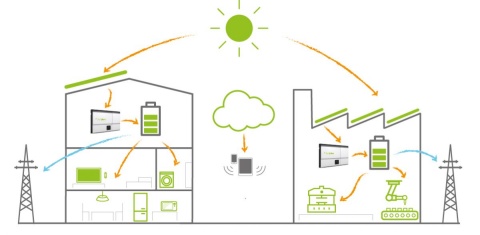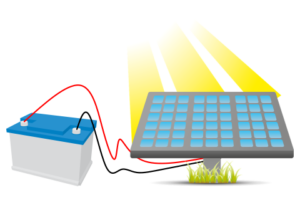Energy Generation On Site With Storage

According to Maya Smart Energy Consulting, Energy resources can account for 30-40% a microgrid’s total cost. Traditionally, microgrids have relied mostly on diesel generators and many microgrids still do. As the cost of renewable energy and batteries have come down, it is cost-eective to include them in the microgrid design. Many remote locations and islands can also saving money by retro‑tting existing microgrids with renewable energy and battery storage.
Microgrids in remote locations, such as isolated areas or physical islands may not be integrated with a larger grid at all, but a microgrid will have a better business case when operating as part of a larger grid when possible.
While the term ‘Microgrid’ might sound futuristic, the trend is really a return to the type of self-contained energy systems that Edison would be familiar with.
That’s right, before building the largest, most complicated, and most interconnected machine in history, all grids were microgrids.
What’s dierent about todays microgrids is the introduction of variable renewable energy (VRE) sources such as wind energy and solar PV energy.
The new economics of energy storage are making high levels of VRE possible on microgrid because batteries can shift the energy from when it’s generated to when it’s needed.
Renewable Source Power Plants
The energy problem can no longer be ignored.
Euroguarco aims to research all technical solutions, including installations powered by renewable sources such as photovoltaic – on- or o-grid – or cogeneration plants, to produce thermal energy from solar thermal panels, heat pumps and radiant panels.
Relying on inexhaustible self-produced sources allows for a signi‑cant reduction in costs for both electrical and thermal energy procurement.
Photovoltaic Installation With Storage System
Photovoltaic installations are designed to reduce the amount of energy sourced from the power grid, thanks to an on-site exchange mechanism.
Customers who decide to purchase a photovoltaic installation are also given the chance to install a storage system, allowing to store part of the electrical energy produced by the photovoltaic system. They will then use it during times when the photovoltaic installations are not generating energy, like the early morning or late evening. Storage considerably reduces electricity costs at all times of day.
Hybrid Inverter
The X-Hybrid Series T, paired to a Hybrid Inverter, compliant with CEI 021 regulations, is the latest technology in the field of solar inverters.
It enables users to considerably reduce their dependence on regular energy suppliers, increasing the proportion of self-produced energy consumption. Its Wi-Fi function, standard on all appliances, means it can be controlled remotely from specially fitted portals.
Wind Energy
Wind energy is produced by the movement of air (wind) and converted into power for human use. Wind has been used as a source of energy for more than a thousand years, but was replaced by fossil fuels for much of the 20th century. Today, wind is making a comeback as a source of electricity and power.
Wind energy is produced with wind turbines—tall, tubular towers with blades rotating at the top. When the wind turns the blades, the blades turn a generator and create electricity; Wind turbines can have a horizontal or vertical axis.
There are three types of wind energy:
Smart System
You can control the system at any time, using a specially designed app available for Android and iOS
Appliances
Installing PV systems reduces companies’ electricity bills by enabling them to self-produce the energy they need. Companies use energy during the day, when photovoltaic installations are at their most productive.
Energy produced in this way can be used immediately, exploiting the installation at its highest rate of production. Energy costs are an ever-increasing part of companies’ budgets: continuous daytime production means high energy consumption.